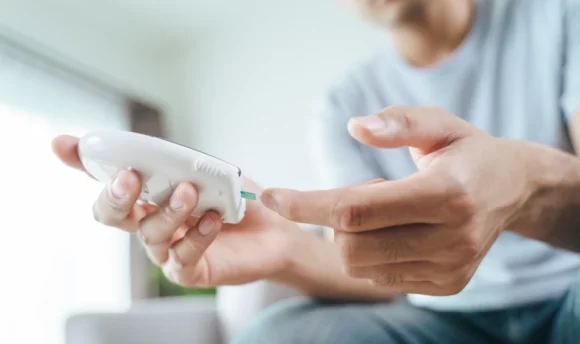Are Lentils Good For Diabetes? Nutritional Value, Glycemic Index, and Benefits
Figuring out the best foods for diabetes can be a daunting task. Diet plays a key role in managing the disease. Our health team assesses the nutritional value of lentils and whether they are a good addition to a diabetes diet. Read on to find out how to incorporate them into your diet.

Lentils are common edible seeds identified by their lens shape. They are a common staple food in countries like Turkey, Jordan, and Syria.
Most people with diabetes are advised to eat high-fiber and low-glycemic foods to lessen the impacts on their blood sugar. However, are lentils good for diabetes? Do they help to control blood glucose?
Until recently, there was little research on the impact of lentils on long-term diabetes management. However, our medical team at Health Reporter assesses the benefits, nutritional value, and impact of lentils on people with diabetes.
Are Lentils Good for Diabetes?
Lentils are a low-glycemic food making them a good choice for a diabetes diet. They are rich in insoluble and soluble fiber, potassium, and folate, making them very healthy food for people with diabetes.
Dietary fiber is good for appetite control as it helps lower food intake. Insoluble fiber supports regular bowel movements and the growth of gut bacteria, thus helping minimize constipation.
Lentils are also rich in plant compounds known as phytochemicals that help protect against chronic diseases such as diabetes mellitus and heart disease. A randomized control trial showed that consuming lentils significantly reduced blood pressure and type 2 diabetes.
Another study on the effects of carbohydrate replacement showed that replacing half a serving of rice with lentils decreased blood sugar levels by 20%. It also showed that those who eat lentils instead of potatoes experience a 35% decrease in blood sugar levels.
Unlike most foods, cooked lentils maintain their health-promoting properties after preparation.
Will Lentils Raise Your Blood Sugar?
Lentils have a low starch content, slow digestion, and sugar release to the bloodstream, eventually helping lower your blood sugar levels.
Some animal studies show that eating lentils has some health benefits such as improved heart health, protection against type 2 diabetes, and reduced blood sugar.
Blood sugar refers to the glucose in the blood during digestion and in the upper digestive tract, and it depends on the carbohydrates in the foods consumed.
High blood sugar is associated with an increased risk of heart disease, but low-GI foods like lentils are also associated with a lower risk of cardiovascular diseases.
An 8-week study among 39 people who were overweight or had diabetes showed that consuming 60g of lentils a day helped improve HDL (“good”) cholesterol levels and lower LDL (“bad”) cholesterol.
People who are obese or overweight are at a higher risk of chronic disease problems. However, lentils are a very filling food that helps decrease overall food intake, contributes to weight management, and stabilizes blood sugar levels.
Nutritional Value of Lentils
Lentils are a nutrient-dense food rich in potassium, B vitamins, and zinc. There are different lentil types, but they generally have the same nutrient composition. Below is the nutrient composition in a 100g serving of raw lentils.
- 24.6g of protein
- 1.06g of fat
- 63.4g of total carbs
- 10.7g of fiber
- 2.03g of sugar
- 49.9g of starch
- 352 calories
It also contains other important nutrients such as magnesium, iron, phosphorus, selenium, and sodium. Lentils also have small amounts of calcium necessary for improving bone health.
Glycemic index of lentils
Lentils have a glycemic index of 22. Adding lentils to a diet for people with diabetes is a great choice as they are low-glycemic and contain resistant starch, lowering foods’ glycemic index.
How to Eat Lentils for Diabetes?
The preparation method of foods affects their glycemic index, and highly processed and poorly prepared foods lead to spikes in blood glucose levels. You can eat lentils with your salad, add them to the soups, stews, or as a side dish.
Unlike most legumes, you can prepare lentils without soaking. You may, however, soak them in cold water for an hour to reduce the effects of oligosaccharides that cause bloating.
Drain the water in a large saucepan, then put the lentils in a pot and cover them with water. Add some salt and boil them, then let them simmer for about 30 minutes. However, some lentil types, such as orange lentils, only take 5 minutes to cook. After boiling, drain the hot water to prevent further cooking.
They should be soft and crunchy, and you can then mix the lentils with tomatoes, onions, garlic, olive oil, and water. Stir to mix and boil the mixture for 5 minutes. You can add more water to the mixture for a thinner consistency.
FAQs
Yes, lentils are a healthy option rich in vitamins, minerals, and other essential nutrients. You can add lentils to your diet as they are a good source of plant protein and fiber, keeping you fuller for longer. The proteins in lentils are also good for muscle growth and cell repair. They also contain phytochemicals, which are good for weight management.
Yes, lentils are a low-GI food, making them an excellent choice for people with diabetes. They are a filling food thanks to their high protein and fiber content, which helps slow down food absorption into the bloodstream. They also have phytochemicals and anti-inflammatories that reduce the risk of chronic diseases such as type 2 diabetes.
A person with diabetes can eat one cup of lentils per serving. The allowable carbohydrate serving for most diets for people with diabetes is 15g, and people with diabetes can have at least three servings per meal. A cup serving of cooked lentils contains 39.9g of carbohydrates, but 15.6g comes from fiber, allowing one cup per serving.
A Word From Our MD
Managing diabetes requires following a healthy diet rich in nutrients and low in calories. The key elements of this diet include veggies, fruits, and whole grains. Lentils are good for diabetes due to their low glycemic index and rich nutrient profile.
A healthy diet helps you control blood glucose, manage weight, and control disease factors.
Lentils help maintain blood sugar levels in a safe range due to their rich nutrient profile. However, if you have kidney problems, you should minimize eating legumes which may lead to an increased concentration of uric acid in the body.
For diabetes patients, weight loss makes it easier to manage blood glucose levels. It would help if you combined a healthy diet with regular exercises like pilates to lose weight.
If you have prediabetes or diabetes, you should consult your doctor for medical advice before making any dietary changes.
Conclusion
Lentils are a low-glycemic food, and if you have diabetes, you can add them to your diet without upsetting your body. They contain fiber and are a filling food that helps manage blood glucose levels.
Lentils are not necessarily a low-carb food, so you should check your serving sizes to ensure your blood sugar levels do not spike. Adding foods rich in fats, fiber, and protein alongside your lentils is also best to help regulate your blood glucose levels.
If you are unsure how a particular food affects your sugar levels, test after a meal. For people with diabetes, testing blood sugar levels after a meal is an excellent way of learning the foods that work best for them.

















































 Select your language:
Select your language: 








